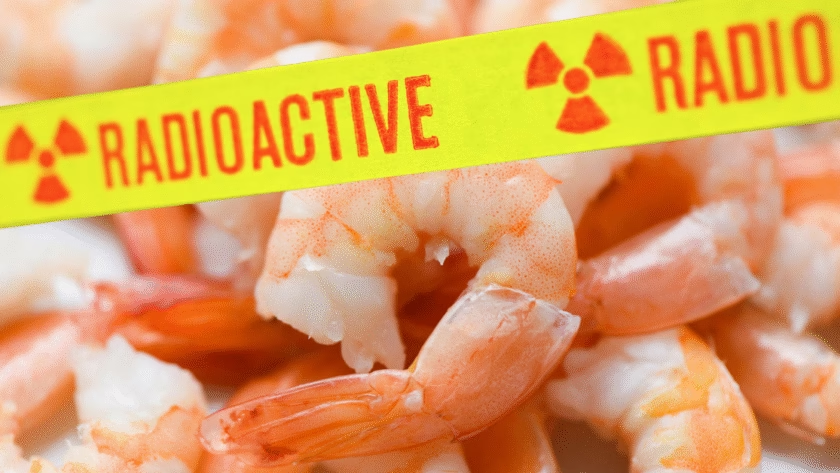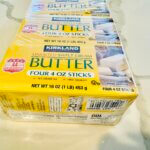The world of food safety is constantly changing. Recently, several brands of frozen shrimp have been recalled. This is because they might contain Cesium-137, a radioactive substance that can harm our health over time.
The FDA is now warning about more shrimp brands. For now, the shrimps recalled were made by PT. Bahari Makmur Sejati, an Indonesian company.
Key Takeaways
- The FDA has expanded its warning on certain frozen shrimp brands.
- An Indonesian supplier processed the recalled products.
- Cesium-137 contamination poses health risks with long-term exposure.
- Affected brands include Walmart and Kroger.
- Consumers are advised to check their frozen shrimp products.
FDA Announces Nationwide Recall of Contaminated Frozen Shrimp
The FDA has issued a nationwide recall for contaminated frozen shrimp. This recall affects many brands across the United States, including Great Value, Kroger, and AquaStar.
The FDA recalled nearly 18,000 bags of Kroger Mercado Cooked Medium Peeled Tail-Off Shrimp. They also recalled about 26,460 packages of cocktail shrimp from AquaStar Corp.
- Great Value: Various frozen shrimp products
- Kroger Mercado: Cooked Medium Peeled Tail-Off Shrimp
- AquaStar: Cocktail Shrimp
Scale of the Recall: Tens of Thousands of Packages Across Dozens of States
The recall covers tens of thousands of packages in dozens of U.S. states.
This shows the contaminated products were widely distributed. Consumers should check their frozen food storage for the affected products.
As the situation develops, the FDA continues to monitor the progress of the recall to ensure that the affected products are removed from the market.
Radioactive Shrimp: What Is Cesium-137 and How Does It Contaminate Food?
Cesium-137 (Cs-137) is a man-made radioactive isotope most commonly produced during nuclear fission, the same process that powers nuclear reactors and creates fallout from nuclear accidents.
Because it has a half-life of approximately 30 years, Cs-137 remains in the environment for a long time after being released.
So how does it end up in food? There are two main pathways:
- Environmental Contamination – If radioactive material is released into oceans, rivers, or soil, it can be absorbed by plants and small organisms. As bigger creatures eat the smaller ones, the contamination “climbs” the food chain, a process known as bioaccumulation. Seafood like shrimp, which feed on detritus and tiny organisms at the seafloor, can easily pick up trace amounts.
- Improper Handling or Shipping – Cs-137 is also used in certain industrial and medical applications (like sterilization equipment and gauges). If waste isn’t disposed of correctly, or if shipping containers are contaminated, food products can accidentally pick up the waste before reaching your plate.
When U.S. authorities tested the recalled shrimp, they detected about 68 becquerels per kilogram (Bq/kg) of Cs-137. To put that in perspective:
- The FDA’s official safety limit is 1,200 Bq/kg, so the recalled shrimp were well below the danger threshold.
- But shrimp normally only measure 0.5–1 Bq/kg. In other words, these were roughly 100 times more radioactive than normal shrimp.
So what does that even mean? Here’s the gross and slightly funny comparison:
- One banana naturally contains about 0.1 Bq of potassium-40 (a harmless form of natural radiation).
- A granite countertop emits a few hundred Bq every day, just sitting in your kitchen.
- A cross-country flight exposes you to the equivalent of several hundred Bq of cosmic radiation.
- One kilogram of radioactive shrimp is equivalent to consuming approximately 680 bananas in terms of radiation.
The difference? Banana and cosmic radiation are natural, and our bodies can handle tiny exposures.
Cs-137, however, is unnatural and potentially harmful if eaten repeatedly because it lodges in soft tissue and can damage DNA over time.
Health Risks: What Experts Say About Consuming Contaminated Shrimp
This all doesn’t mean you’d start glowing if you ate one. A single serving at those levels wouldn’t cause immediate harm.
The bigger concern is chronic exposure; eating contaminated seafood regularly over time could increase the risk of DNA damage, cancer, or other radiation-related health effects.
Short-term Exposure Risk Assessment
Experts say a single exposure to contaminated shrimp is unlikely to cause harm.
But the FDA still advises against eating the recalled products. This is to minimize any risk.
While acute exposure may not cause immediate health issues, it’s still important to follow the recall guidelines.
Medical Recommendations for Those Who May Have Consumed Recalled Products
If you’ve eaten the recalled shrimp, watch for unusual health symptoms. If you’re concerned, talk to a healthcare provider.
The FDA recommends returning the recalled products for a full refund. If you’re concerned about your exposure, consult your healthcare provider for guidance.
| Risk Category | Short-term Exposure | Long-term Exposure |
|---|---|---|
| Health Risk | Low | Elevated |
| Potential Health Impact | Minimal | DNA damage, Cancer risk |
| Recommended Action | Avoid recalled products | Return products, consult a healthcare provider |
How the Contamination Was Discovered at U.S. Ports
A sophisticated detection system at major U.S. ports found Cesium-137 in the imported frozen shrimp. This was made possible by advanced radiation detection technology at key ports.
The ports of Los Angeles, Houston, Miami, and Savannah have top-notch detection systems.
They can scan incoming containers for radioactive materials. This helps prevent contaminated food imports from entering the supply chain.
When radioactive contamination is detected, the FDA and U.S. Customs initiate a thorough investigation. They track the shipment’s origin, check the containers, and test the products for Cesium-137.
The FDA uses special equipment and methods to test food imports for radioactive contamination. These tests are crucial in ensuring the products are safe and comply with FDA regulations.
Consumer Action Guide: Steps to Take If You Purchased Recalled Products
Many consumers are unsure what to do next. It’s crucial to check if your frozen shrimp has been recalled and take the right steps.
How to Identify Affected Packages by Brand, Lot Number, and Date
To determine if your shrimp has been recalled, check the brand, lot number, and date on the packaging.
The FDA suggests looking at the product label for these details:
- Brand names like Great Value, Kroger Mercado, and AquaStar
- Specific lot numbers and expiration dates on the FDA’s recall notice
By matching these details, you can determine if your shrimp has been recalled. For the latest information, visit the FDA’s website or contact the store directly.
Return Procedures at Walmart, Kroger, and Other Retailers
If you bought recalled products, returning them is easy. Here’s how:
- Check your receipt or call the store to see their return policy.
- Take the recalled product and receipt to the store.
- Follow the store’s return instructions, which may require you to speak with a customer service representative.
Walmart and Kroger usually give full refunds for recalled items. They might also post more about the recall and how to return items on their websites.
Safe Alternatives to Purchase During the Recall Period
If you frequently purchase frozen shrimp, there are safe options available during the recall.
Look for shrimp from stores not affected by the recall.
Additionally, opt for products certified by reputable third-party organizations for food safety.
Some might choose other proteins until the recall ends.
Industry Response and Supply Chain Implications
Retailers and distributors are taking quick action. The FDA is expanding its warning, and companies are working to stop more contamination.
Statements from Affected Retailers and Distributors
Walmart and Kroger have promised to remove the tainted products from their shelves. “We are committed to providing safe and quality products to our customers,” said a Walmart spokesperson.
Distributors are also helping the FDA fix the problem.
The National Fisheries Institute said, “The industry is working closely with regulatory agencies to ensure that all seafood products are safe for consumption.”
This teamwork aims to regain consumer trust and avoid future problems.
Enhanced Screening Measures for Future Seafood Imports
The FDA has introduced new screening for seafood imports. “We are committed to ensuring that all food products entering the U.S. market are safe for consumption,” said an FDA spokesperson.
The new rules include stricter testing for radioactive contamination at ports.
The FDA has also put PT. Bahari Makmur Sejati under a full import alert. This means its products can’t enter the U.S. until the contamination is fixed.
Conclusion: Monitoring the Situation and Ensuring Food Safety
The FDA is working to prevent more radioactive shrimp from entering our food supply.
They are checking all frozen shrimp to make sure they’re safe. If you have shrimp at home, check if it’s on the list of bad products.
We need to be cautious about the food we eat, especially when it comes to imports. The discovery of Cesium-137 in shrimp further underscores the need for enhanced inspections at U.S. ports.




